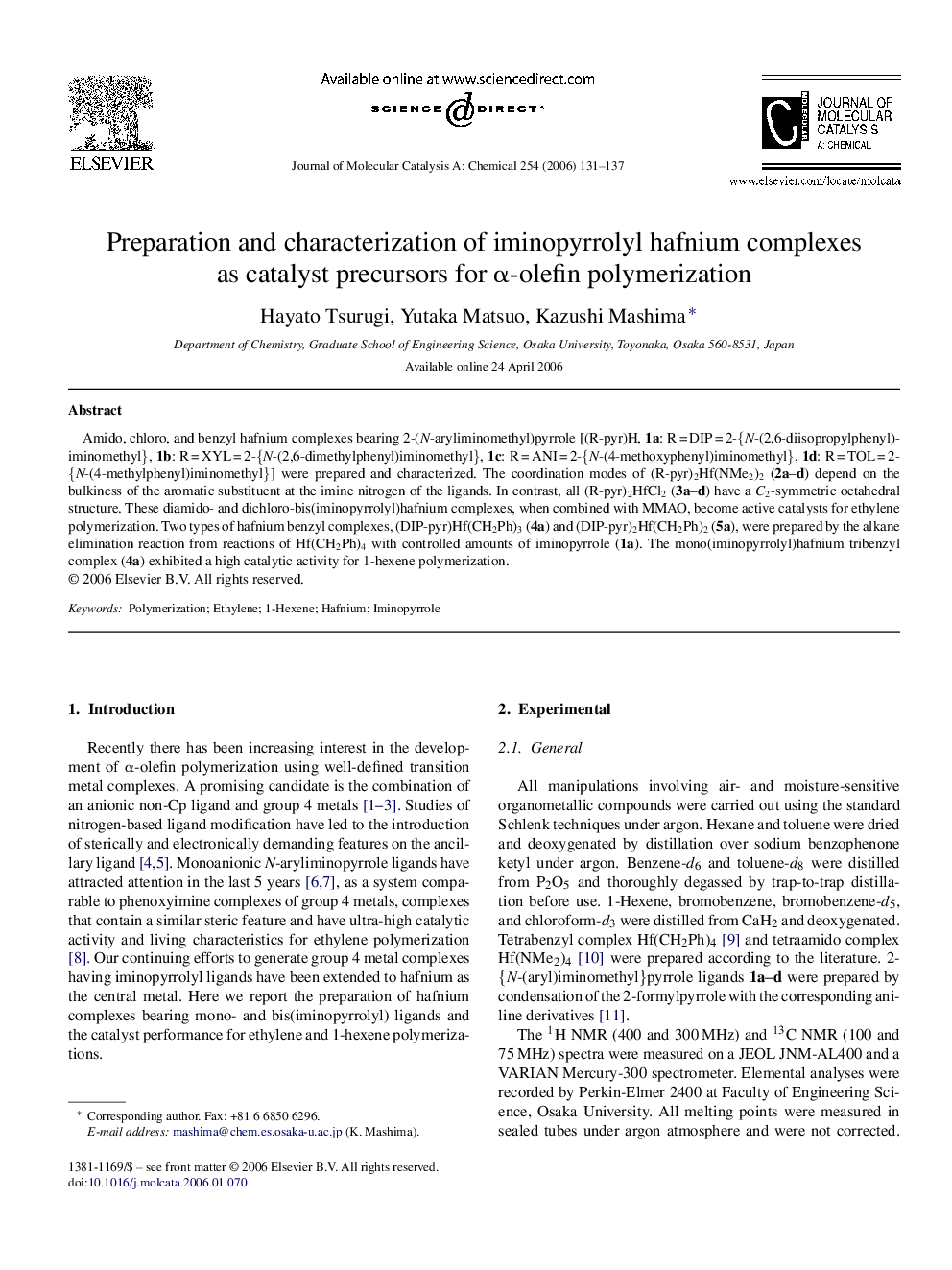| Article ID | Journal | Published Year | Pages | File Type |
|---|---|---|---|---|
| 68759 | Journal of Molecular Catalysis A: Chemical | 2006 | 7 Pages |
Amido, chloro, and benzyl hafnium complexes bearing 2-(N-aryliminomethyl)pyrrole [(R-pyr)H, 1a: R = DIP = 2-{N-(2,6-diisopropylphenyl)iminomethyl}, 1b: R = XYL = 2-{N-(2,6-dimethylphenyl)iminomethyl}, 1c: R = ANI = 2-{N-(4-methoxyphenyl)iminomethyl}, 1d: R = TOL = 2-{N-(4-methylphenyl)iminomethyl}] were prepared and characterized. The coordination modes of (R-pyr)2Hf(NMe2)2 (2a–d) depend on the bulkiness of the aromatic substituent at the imine nitrogen of the ligands. In contrast, all (R-pyr)2HfCl2 (3a–d) have a C2-symmetric octahedral structure. These diamido- and dichloro-bis(iminopyrrolyl)hafnium complexes, when combined with MMAO, become active catalysts for ethylene polymerization. Two types of hafnium benzyl complexes, (DIP-pyr)Hf(CH2Ph)3 (4a) and (DIP-pyr)2Hf(CH2Ph)2 (5a), were prepared by the alkane elimination reaction from reactions of Hf(CH2Ph)4 with controlled amounts of iminopyrrole (1a). The mono(iminopyrrolyl)hafnium tribenzyl complex (4a) exhibited a high catalytic activity for 1-hexene polymerization.
Graphical abstractWe prepared amido, chloro, and benzyl hafnium complexes bearing 2-(N-aryliminomethyl)pyrrolyl ligands. The diamido and dichloro bis(iminopyrrolyl)hafnium complexes were found to become active ethylene polymerization catalysts, when combined with MMAO. The mono(iminopyrrolyl)hafnium tribenzyl complex, which was prepared by the reaction of Hf(CH2Ph)4 with 1 equiv. of sterically demanding iminopyrrolyl ligand, became a highly active catalyst for 1-hexene polymerization, upon activation with [Ph3C][B(C6F5)4]. Figure optionsDownload full-size imageDownload as PowerPoint slide
